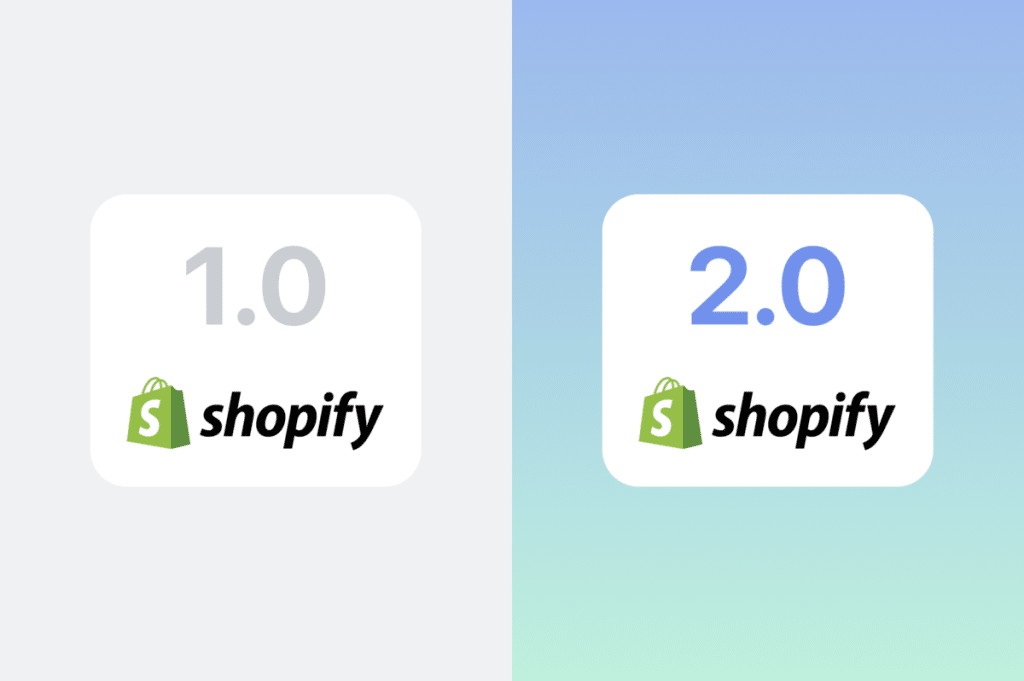
A Look Back at Shopify 1.0: The Foundation of Modern E-Commerce
Shopify has become a household name in the e-commerce world, empowering millions of entrepreneurs to create and scale their online stores. But before Shopify became the robust, feature-rich platform we know today, it started with a simple yet revolutionary concept: Shopify 1.0. In this blog, we’ll take a nostalgic dive into Shopify’s earliest version, exploring its humble beginnings, key features, and how it laid the groundwork for the global e-commerce powerhouse it is today.
The Birth of Shopify
Shopify was founded in 2006 by Tobias Lütke, Daniel Weinand, and Scott Lake. Initially, the platform was born out of necessity. Lütke, a programmer by trade, was dissatisfied with the e-commerce solutions available at the time when trying to launch an online snowboarding equipment store, Snowdevil. Instead of settling, he built his own platform, which eventually became Shopify.
In 2007, Shopify 1.0 was officially launched to the public. Its mission was clear: to make it easy for anyone to build and manage an online store without needing extensive technical expertise.
Key Features of Shopify 1.0
Shopify 1.0 was designed to be simple and intuitive, providing a foundation that focused on usability and accessibility. While it lacked the advanced features of today’s Shopify platform, it introduced several key features that were innovative for its time:
1. User-Friendly Interface
Shopify 1.0 emphasized simplicity, offering an intuitive dashboard that allowed users to manage their stores with ease. Store owners could add products, manage orders, and customize their storefronts without writing a single line of code.
2. Hosted Solution
One of the standout features of Shopify 1.0 was its hosted nature. Unlike other e-commerce platforms of the time that required users to set up their own servers, Shopify handled all the hosting. This eliminated technical barriers and allowed store owners to focus on growing their businesses.
3. Customizable Themes
Even in its earliest version, Shopify offered customizable themes, enabling store owners to create a storefront that matched their brand. While the selection was limited compared to today’s extensive theme library, the ability to personalize an online store was a game-changer.
4. Secure Payment Processing
Shopify 1.0 prioritized security by providing built-in payment processing capabilities. It supported major payment gateways and ensured that customer transactions were secure, building trust between merchants and shoppers.
5. SEO-Friendly Design
Search engine optimization (SEO) was a priority even in Shopify’s early days. Shopify 1.0 included features like customizable meta tags, clean URLs, and automatic sitemaps, helping store owners improve their search engine rankings.
The Impact of Shopify 1.0
Shopify 1.0 may seem basic compared to today’s standards, but its release marked a turning point in the e-commerce industry. It lowered the barriers to entry for aspiring entrepreneurs and small businesses, making it possible for anyone to create an online store without extensive technical knowledge or resources.
By focusing on user experience and accessibility, Shopify 1.0 set a new standard for e-commerce platforms. Its hosted nature, customizable themes, and secure payment options created a reliable and scalable foundation for businesses of all sizes.
How Shopify Has Evolved
Since the launch of Shopify 1.0, the platform has undergone significant transformations. Shopify now powers millions of stores across 175 countries, offering advanced features such as:
Shopify Liquid: A powerful templating language for theme customization.
App Store: Thousands of apps to extend functionality.
Multi-Currency Support: For global businesses.
Shopify Plus: Tailored solutions for enterprise-level businesses.
POS Integration: For seamless in-person and online sales.
Headless Commerce: Allowing businesses to decouple their front-end and back-end systems for greater flexibility.
Lessons from Shopify 1.0
The success of Shopify 1.0 teaches us valuable lessons about innovation and customer focus:
Solve Real Problems: Shopify 1.0 was created to address the shortcomings of existing e-commerce solutions, prioritizing simplicity and usability.
Iterate and Improve: While Shopify 1.0 laid the foundation, the platform has continuously evolved to meet the changing needs of its users.
Focus on Accessibility: By lowering technical barriers, Shopify enabled a diverse range of entrepreneurs to thrive in the digital economy.
Conclusion
Shopify 1.0 was more than just a product launch—it was the beginning of a revolution in e-commerce. Its emphasis on simplicity, usability, and security set the stage for the platform’s meteoric rise. Today, Shopify continues to build on the principles established in its earliest version, empowering entrepreneurs to turn their ideas into successful businesses.
As we celebrate Shopify’s journey from its 1.0 roots to its current status as a leading global platform, one thing remains clear: the best ideas start with solving real problems and putting users first.